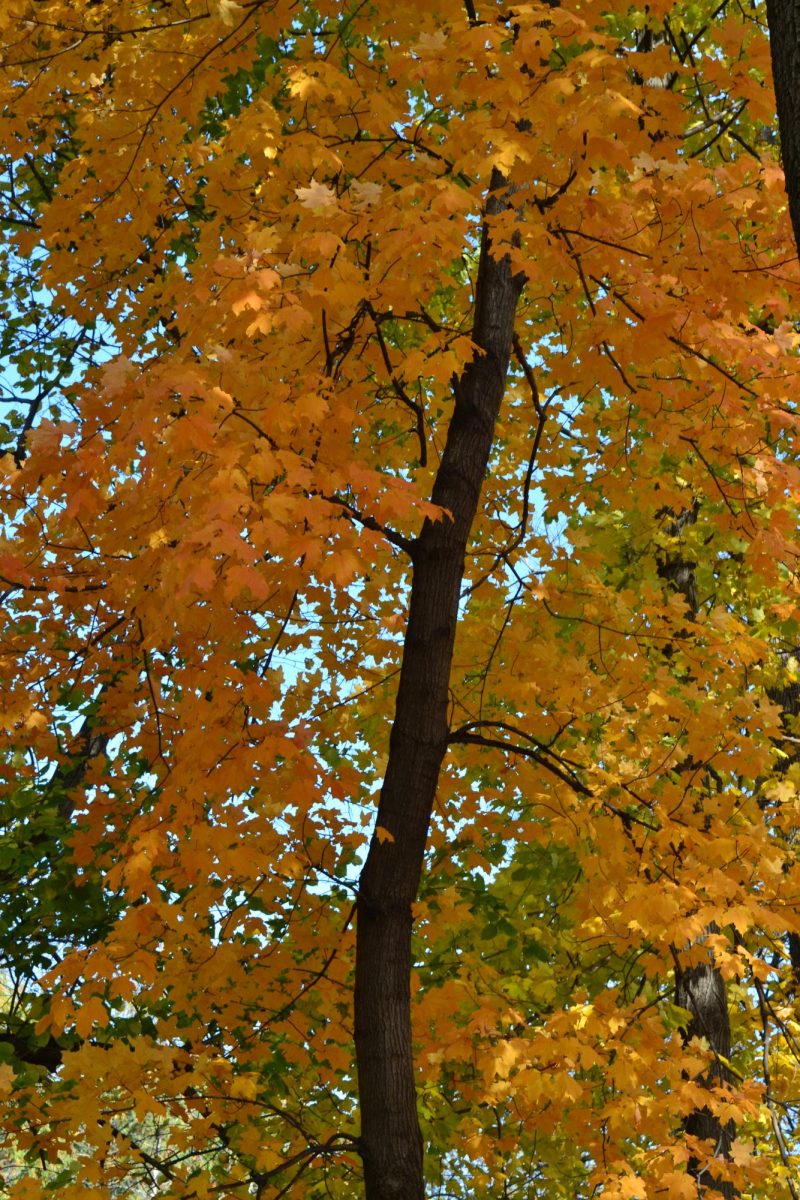A smidge of gold has doused the Northfield foliage a touch earlier than last year, and a touch later than the year before. These shortening days, as well as the cooler temperatures we experienced the first week of classes, kicked off the annual Minnesota spectacle. Southeastern Minnesota’s drought may weaken the fall colors this year, but the trees will still show orange, yellow and bright red, culminating in these next few weeks. The tree fall colors are at the beginning of their steady procession; as the gold of walnut leaves leeches and becomes the gold of tamarack needles in November, Northfield will prepare for winter.
While the last acorn from our massive campus burr oaks fall to the ground, the black walnut shed the first of its chlorophyll (as well as some of its edible, hard-shelled nuts). The yellow leaves of the black walnut may be some of the first fall colors to appear, and are joined at a rather slower pace by the local red oaks, maples, cottonwoods and birch. This season, some red oaks are turning straight to brown and skipping red, their deep lobes already the color of soil against the leaf’s green center. Later in the season, aspens and larch begin to get their color, and other trees, such as the Amur maple, switch from orange foliage to red.
It’s worth noting that a few trees change color outside Southeastern Minnesota’s fall rhythm. Those trees may be the bookend trees, the local trees which turn gold early or late in the season. Other times, those trees may come from other places on the globe, and have been conditioned to winters with different latitudes or temperature ranges. The brilliantly colored and highly invasive Amur maple is one such tree. Unfortunately, this maple will out-compete native plants and can thwart habitat restoration efforts.
Wind and rain (and snow) will dictate when the last leaves depart from trees. The exception: some hearty oaks will support their brown leaves throughout the winter, and will only fall when fresh leaf buds appear next year.












